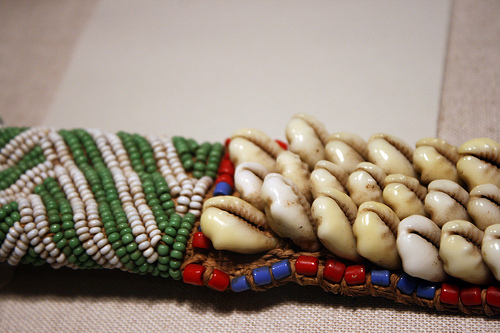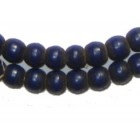The humble cowrie shell has many connotations and uses in African culture – not least as a form of legal tender up until the early 20th century. Symbolic of both destiny and prosperity, the shell of Cypraeidae molluscs (large sea snails) was considered particularly valuable by tribes in West Africa, whom associate them with various ocean deities associated with wealth and strength. Such was the value of the cowry to Ghanaian tribespeople, they even named their currency (the “cedi”) after these marine molluscs!
Interestingly, cowrie shells are not native to Africa. They are predominantly found in the Indian and South Pacific Oceans, most notably around the Maldives and Fiji. According to historians, it’s likely that strands of these small, polished ‘sea eggs’ were introduced to Africa by Chinese merchants sometime around the 9th century, making them one of the earliest types of trade beads to be used as a medium of exchange anywhere in Africa.
The value of the cowrie shell is well documented to have been far greater in West Africa than elsewhere on the continent, and many attribute this to the West Africans’ love of beads for self-adornment. Merchant journals from the 19th century suggest that gains for cowrie shells sometimes exceeded 300%! The lucrative trade in cowrie shells during the 1800s led to the development of a recognised currency system of sorts, with around 20-30 strings equating to one dollar. Inland too, the measure of one’s wealth was counted in cowrie shells; the then king of Bornu estimated to be worth more than 30,000,000!
Today, the cowrie shell continues to play a central role in the cultures and faiths of many African tribes. Some tribes, such as the Maasai, hang cowrie shells from the bride’s wedding necklace to encourage fertility and prosperity, while in rural parts of Ghana, whole strands of shells are gifted to the groom as part of the bride’s dowry. But value aside, cowrie shells are a beautiful natural element for tribal inspired jewelry, and in contrast to the 19th century, aren’t all that expensive either!

Shop Cowrie Shell Beads – 80 Shells per Strand

